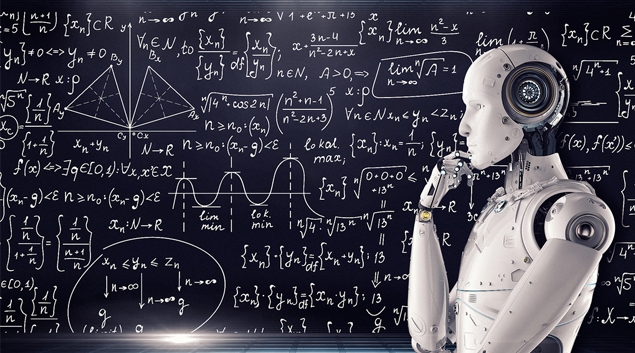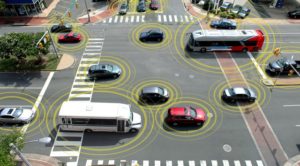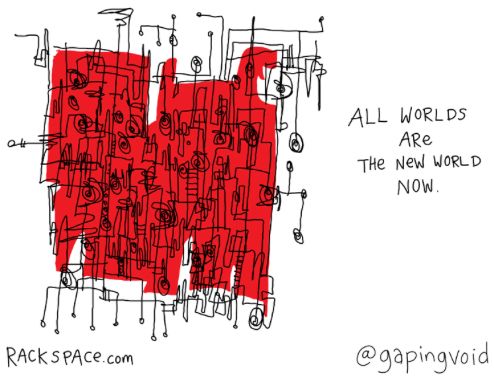Category: driverless cars

Is artificial consciousness the solution to AI?
Artificial Intelligence (AI) is an emerging field of computer programming that is already changing the way we interact online and in real life, but the term ‘intelligence’ has been poorly defined. Rather than focusing on smarts, researchers should be looking at the implications and viability of artificial consciousness as that’s the real driver behind intelligent decisions.
Consciousness rather than intelligence should be the true measure of AI. At the moment, despite all our efforts, there’s none.
Significant advances have been made in the field of AI over the past decade, in particular with machine learning, but artificial intelligence itself remains elusive. Instead, what we have is artificial serfs—computers with the ability to trawl through billions of interactions and arrive at conclusions, exposing trends and providing recommendations, but they’re blind to any real intelligence. What’s needed is artificial awareness.

Life or Death: Will Robo-Cars Swerve for Squirrels?
Self Driving Cars and Ethics. It’s a topic that has been debated in blogs, op-eds, academic research papers, and youtube videos. Everyone wants to know, if a self-driving car has to choose between sacrificing its occupant, or terminating a car full of nobel prize winners, who will it pick? Will it be programmed to sacrifice for the greater good, or protect itself — and its occupants — at all costs? But in the swirl of hypothetical discussion around jaywalking Grandmas, buses full of school-children, Kantian Ethics and cost-maps, one crucial question is being forgotten:
What about the Squirrels?
What is your take on the ethics of driverless vehicles? Should programmers attempt to give vehicles the ability to weigh moral problems, or just vehicles only have the aim of self-preservation?

Today’s Transformation, Tomorrow’s Transportation
A Future Scenario by Shubham Sawant
Las Vegas: February 10, 2027
I woke up with the pleasing sound of alarm followed by a sweet voice came, “Good morning. It’s 7:00 am. You have reached at MGM, Las Vegas.” I was sound asleep for the last 8 hours in my car while it was driving me from San Francisco to Las Vegas. I got out with my luggage and the car zoomed away to pick-up another passenger. Everything has changed in the last 10 years. It is like a dream come true scenario for motorist. The roads are super clean with no honking, no speeding tickets, no angry words or smoke. Every vehicle on the road is communicating with every other vehicle and the traffic is always moving in complete synchronization.
The biggest change happed in last few years is people stopped buying cars. Big companies established their network of taxi services. With the push of a button on cell phone the car arrives wherever you are. The technology is so advanced that the car nearest to you finds your request. You enter the destination and the algorithm works to find the fastest most economical path to your destination and you are on your way.
Most of the parking spaces are gone under restructuring. People have converted their parking garages into recreational rooms or extra bedrooms or what not. The entire look and feel of cities has gone under transformation. The accident rates are almost negligible and car insurance industry is almost brink of extinction. Similarly oil industry stocks are at the bottom and renewable energy is booming. The science fiction has become reality.
Shubham Sawant is a Junior at the University of Houston as a Mechanical Engineering Technology Major. This scenario was part of a project he completed for the course TECH 1313-Impact of Modern Technology on Society.
Shubham says: “I have been very fascinated with the future and how it will be like. Every year, new and new people come up with amazing ideas and products that help us further think about how the future will be. I love to read and I almost always try to read anything that relates to the future. Since I was 4, I have grown to love automotive culture. You will see me talking about cars in a conversation. I love sports like soccer, swimming and cycling. I plan to work in the automotive industry and hopefully get a career to design and manufacture automobiles!”
Autonomous Cars: The Ultimate Job Creator?
In our last film, we explored how the introduction of autonomous, self-driving cars is likely to kill a lot of jobs. Many millions of jobs, in fact. But is it short sighted to view self-driving vehicles as economic murderers? Is it possible that we got it totally wrong, and automated vehicles won’t be Grim Reapers — but rather the biggest job creators since the internet?
In this video series, the Galactic Public Archives takes bite-sized looks at a variety of terms, technologies, and ideas that are likely to be prominent in the future. Terms are regularly changing and being redefined with the passing of time. With constant breakthroughs and the development of new technology and other resources, we seek to define what these things are and how they will impact our future.
Will Self-Driving Cars Kill Your Job?
Self-driving cars are pretty cool. Really, who wouldn’t want to spend their daily commute surfing social media, chatting with friends or finishing the Netflix series they were watching at 4 am the night before? It all sounds virtually utopian. But what if there is a dark side to self-driving cars? What if self-driving cars kill the jobs? ALL the jobs?
In this video series, the Galactic Public Archives takes bite-sized looks at a variety of terms, technologies, and ideas that are likely to be prominent in the future. Terms are regularly changing and being redefined with the passing of time. With constant breakthroughs and the development of new technology and other resources, we seek to define what these things are and how they will impact our future.

Follow the money – the future evolution of automotive markets
The automotive industry is undergoing a period of rapid and radical transformation fueled by a range of technological innovations, digital advancements and wave after wave of new entrants and alternative business models; as a result, the entire sector is seeing major disruption.

The Many Uses of Multi-Agent Intelligent Systems
In professional cycling, it’s well known that a pack of 40 or 50 riders can ride faster and more efficiently than a single rider or small group. As such, you’ll often see cycling teams with different goals in a race work together to chase down a breakaway before the finish line.
This analogy is one way to think about collaborative multi-agent intelligent systems, which are poised to change the technology landscape for individuals, businesses, and governments, says Dr. Mehdi Dastani, a computer scientist at Utrecht University. The proliferation of these multi-agent systems could lead to significant systemic changes across society in the next decade.
Image credit: ResearchGate
“Multi-agent systems are basically a kind of distributed system with sets of software. A set can be very large. They are autonomous, they make their own decisions, they can perceive their environment, “Dastani said. “They can perceive other agents and they can communicate, collaborate or compete to get certain resources. A multi-agent system can be conceived as a set of individual softwares that interact.”
As a simple example of multi-agent systems, Dastani cited Internet mail servers, which connect with each other and exchange messages and packets of information. On a larger scale, he noted eBay’s online auctions, which use multi-agent systems to allow one to find an item they want to buy, enter their maximum price and then, if needed, up the bid on the buyer’s behalf as the auction closes. Driverless cars are another great example of a multi-agent system, where many softwares must communicate to make complicated decisions.
Dastani noted that multi-agent systems dovetail nicely with today’s artificial intelligence. In the early days of AI, intelligence was a property of one single entity of software that could, for example, understand human language or perceive visual inputs to make its decisions, interact, or perform an action. As multi-agent systems have been developed, those single agents interact and receive information from other agents that they may lack, which allows them to collectively create greater functionality and more intelligent behavior.
“When we consider (global) trade, we basically define a kind of interaction in terms of action. This way of interacting among individuals might make their market more efficient. Their products might get to market for a better price, as the amount of time (to produce them) might be reduced,” Dastani said. “When we get into multi-agent systems, we consider intelligence as sort of an emergent phenomena that can be very functional and have properties like optimal global decision or situations of state.”
Other potential applications of multi-agent systems include designs for energy-efficient appliances, such as a washing machine that can contact an energy provider so that it operates during off-peak hours or a factory that wants to flatten out its peak energy use, he said. Municipal entities can also use multi-agent systems for planning, such as simulating traffic patterns to improve traffic efficiency.
Looking to the future, Dastani notes the parallels between multi-agent systems and Software as a Service (SaaS) computing, which could shed light on how multi-agent systems might evolve. Just as SaaS combines various applications for on-demand use, multi-agent systems can combine functionalities of various software to provide more complex solutions. The key to those more complex interactions, he added, is to develop a system that will govern the interactions of multi-agent systems and overcome the inefficiencies that can be created on the path toward functionality.
“The idea is the optimal interaction that we can design or we can have. Nevertheless, that doesn’t mean that multi-agent systems are by definition, efficient,” Dastani said. “We can have many processes that communicate, make an enormous number of messages and use a huge amount of resources and they still can not have a sort of interesting functionality. The whole idea is, how can we understand and analyze the interactions? How can we decide which interaction is better than the other interactions or more efficient or more productive?”

Report by Robert Scoble from CES | KurzweilAI
“CES wrapped up last week and I can say it was the best one I’ve seen in a decade. Three big stories jumped out this year:
1. VR.
2. Self driving cars.
3. AR.”
Does The Potential of Automation Outweigh The Perils?
These days, it’s not hard to find someone predicting that robots will take over the world and that automation could one day render human workers obsolete. The real debate is over whether or not the benefits do or do not outweigh the risks. Automation Expert and Author Dr. Daniel Berleant is one person who is more often on the side of automation.
There are many industries that are poised to be affected by the oncoming automation boom (in fact, it’s a challenge to think of one arena that will not in some minimal way be affected). “The government is actually putting quite a bit of money into robotic research for what they call ‘cooperative robotics,’” Berleant said. “Currently, you can’t work near a typical industrial robot without putting yourself in danger. As the research goes forward, the idea is (to develop) robots that become able to work with people rather than putting them in danger.”
While many view industrial robotic development as a menace to humanity, Berleant tends to focus on the areas where automation can be a benefit to society. “The civilized world is getting older and there are going to be more old people,” he said. “The thing I see happening in the next 10 or 20 years is robotic assistance to the elderly. They’re going to need help, and we can help them live vigorous lives and robotics can be a part of that.”
Berleant also believes that food production, particularly in agriculture, could benefit tremendously from automation. And that, he says, could have a positive effect on humanity on a global scale. “I think, as soon as we get robots that can take care of plants and produce food autonomously, that will really be a liberating moment for the human race,” Berleant said. “Ten years might be a little soon (for that to happen), maybe 20 years. There’s not much more than food that you need to survive and that might be a liberating moment for many poor countries.”
Berleant also cites the automation that’s present in cars, such as anti-lock brakes, self-parking ability and the nascent self-driving car industry, as just the tip of the iceberg for the future of automobiles. “We’ve got the technology now. Once that hits, and it will probably be in the next 10 years, we’ll definitely see an increase in the autonomous capabilities of these cars,” he said. “The gradual increase in intelligence in the cars is going to keep increasing and my hope is that fully autonomous cars will be commonplace within 10 years.”
Berleant says he can envision a time when the availability of fleets of on-demand, self-driving cars reduces the need for automobile ownership. Yet he’s also aware of the potential effects of that reduced car demand on the automobile manufacturing industry; however, he views the negative effect created by an increase in self-driving cars as outweighed by the potential time-saving benefits and potential improvements in safety.
“There is so much release of human potential that could occur if you don’t have to be behind the wheel for the 45 minutes or hour a day it takes people to commute,” Berleant said. “I think that would be a big benefit to society!”
His view of the potential upsides of automation doesn’t mean that Berleant is blind to the perils. The risks of greater productivity from automation, he believes, also carry plenty of weight. “Advances in software will make human workers more productive and powerful. The flipside of that is when they actually improve the productivity to the point that fewer people need to be employed,” he said. “That’s where the government would have to decide what to do about all these people that aren’t working.”
Cautious must also be taken in military AI and automation, where we have already made major progress. “The biggest jump I’ve seen (in the last 10 years) is robotic weaponry. I think military applications will continue to increase,” Berleant said. “Drones are really not that intelligent right now, but they’re very effective and any intelligence we can add to them will make them more effective.”
As we move forward into a future increasingly driven by automation, it would seem wise to invest in technologies that provide more benefits to society i.e. increased wealth, individual potential, and access to the basic necessities, and to slowly and cautiously (or not at all) develop those automated technologies that pose the greatest threat for large swaths of humanity. Berleant and other like-minded researchers seem to be calling for progressive common sense over a desire to simply prove that any automation (autonomous weapons being the current hot controversy) can be achieved.